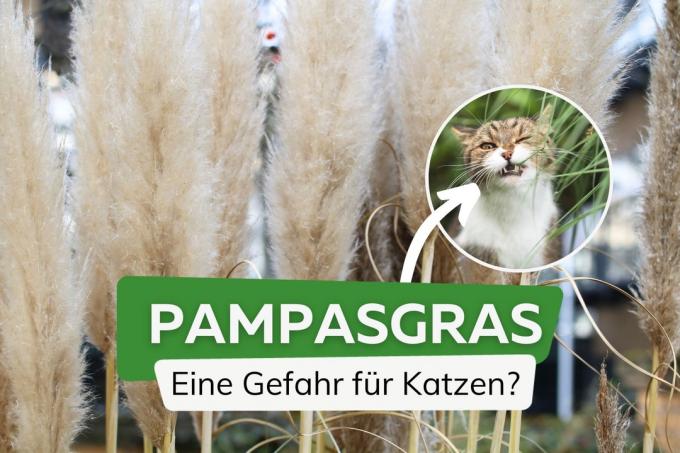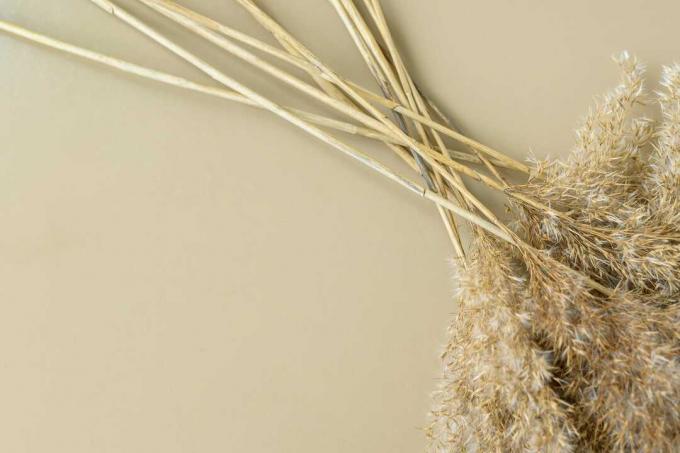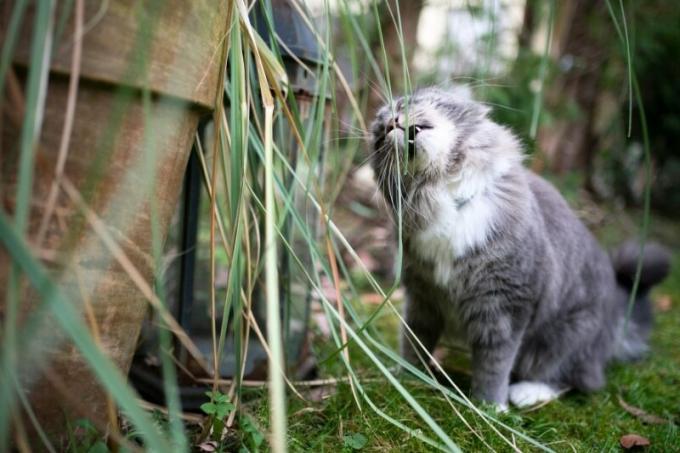
The imposing pampas grass is a real eye-catcher with its fluffy white or pink flower clusters. No wonder that it is one of the most popular ornamental grasses in this country. But are the clumps of pampas grass, which can be up to 250 centimeters high, poisonous or dangerous for cats?
In a nutshell
- contains no toxic ingredients, therefore non-toxic
- but sharp-edged leaves with barbs
- internal and external injuries possible
- internal injuries potentially fatal
- Cat owners are better off avoiding pampas grass
Table of contents
- Non-toxic but sharp-edged
- Protect cats from pampas grass
- What to do if swallowed?
- frequently asked Questions
Non-toxic but sharp-edged
Like all ornamental grasses, this also contains pampas grass (Cortaderia selloana) does not contain any toxic substances, so it is not poisonous to cats. Nevertheless, the popular garden plant is not entirely harmless for free-roaming animals, because its leaves are hard, very sharp and can have barbs. So if the curious house cat nibbles on it, it is
- internal injuries and bleeding in the mouth and digestive tract
- at worst with fatal consequences
- and external injuries such as cuts
the possible consequence.

Tip: Even those who don't keep cats should Plant and other pampas grass care measures, e.g. B. at the Tie up in the fall or at pruning, always wear protective gloves to avoid cuts.
Protect cats from pampas grass
To protect their four-legged friends from potentially dangerous cuts, cat owners should
- do not plant pampas grass in the garden
- Remove existing perennials
- do not place dried pampas grass in the apartment

However, the ornamental grass remains sharp even when dried, and the barbs also remain dangerous. That's why responsible cat owners shouldn't set up dried bouquets with pampas grass or similar ornamental grasses in their homes.
There is no safe spot for living pampas grass in the garden, as cats, thanks to their mobility and climbing skills, can get anywhere. In addition, the velvet paws like to nibble on all grasses and do not let themselves be stopped by pampas grass. Therefore, do without dangerous ornamental grasses and plant green plants that are better suited to four-legged friends.
A notice: Almost all cats eat grass because it helps them vomit indigestible food. In addition, the grass serves as a source of vitamins and minerals that the animal cannot get from anywhere else. It's a natural, healthy behavior.
What to do if swallowed?

If your cat accidentally swallowed pampas grass or another potentially dangerous ornamental grass, you can carefully remove any leftovers from its mouth. Watch out for possible bloody injuries. Then wait and see whether the animal shows suspicious symptoms such as
- violent, noisy, and ineffective gagging
- excessive salivation or vomiting of saliva
- refusal of food intake
- as well as apathy
shows. If this is the case, you should go to a veterinarian or an animal hospital as soon as possible and describe your suspicion. Typical symptoms of poisoning such as vomiting, diarrhea etc. are not to be expected, after all, pampas grass is not poisonous to cats.
A notice: The vet will have to remove any plant remains under anesthesia, which involves costs. In addition, the animal can die as a result of the internal injuries, which, however, only occurs very rarely.
frequently asked Questions
Cat grass is not a special type of plant, but a collective term for various plants that are more suitable for cats sweet grasses. These include a variety of grain types such as wheat, rye, barley, oats or millet, which are easy to sow and cultivate in pots. Also popular as a houseplant spider plant is well suited as cat grass, as it contains neither sharp-edged leaves nor toxic ingredients.
In principle, cats nibble on all grasses, as they use them for digestion and for the supply of v. a. with folic acid need. Therefore, you cannot train your velvet paw to behave this way, but should avoid potentially dangerous grasses from the outset and replace them with more suitable species. In the garden, in addition to the sweet grasses already mentioned (which, however, have no significant ornamental effect), above all catnip (Nepeta) and Valerian (Valeriana officinalis).
Not only the pampas grass is potentially dangerous for cats, but also other types of ornamental grasses such as Pennisetum grass (Pennisetum alopecuroides), bearskin grass (Festuca gautieri), Chinese reed (Miscanthus) or other varieties with sharp-edged leaves have no place in gardens with free-roaming cats. Be careful with Cyprus grass (Cyperus) in particular! In particular, the dwarf cyprus grass (C. alternifolius 'Nana') is occasionally offered in the trade especially for cats, but is also very sharp-edged. It is better to switch to other grasses that are less dangerous for curious velvet paws.


